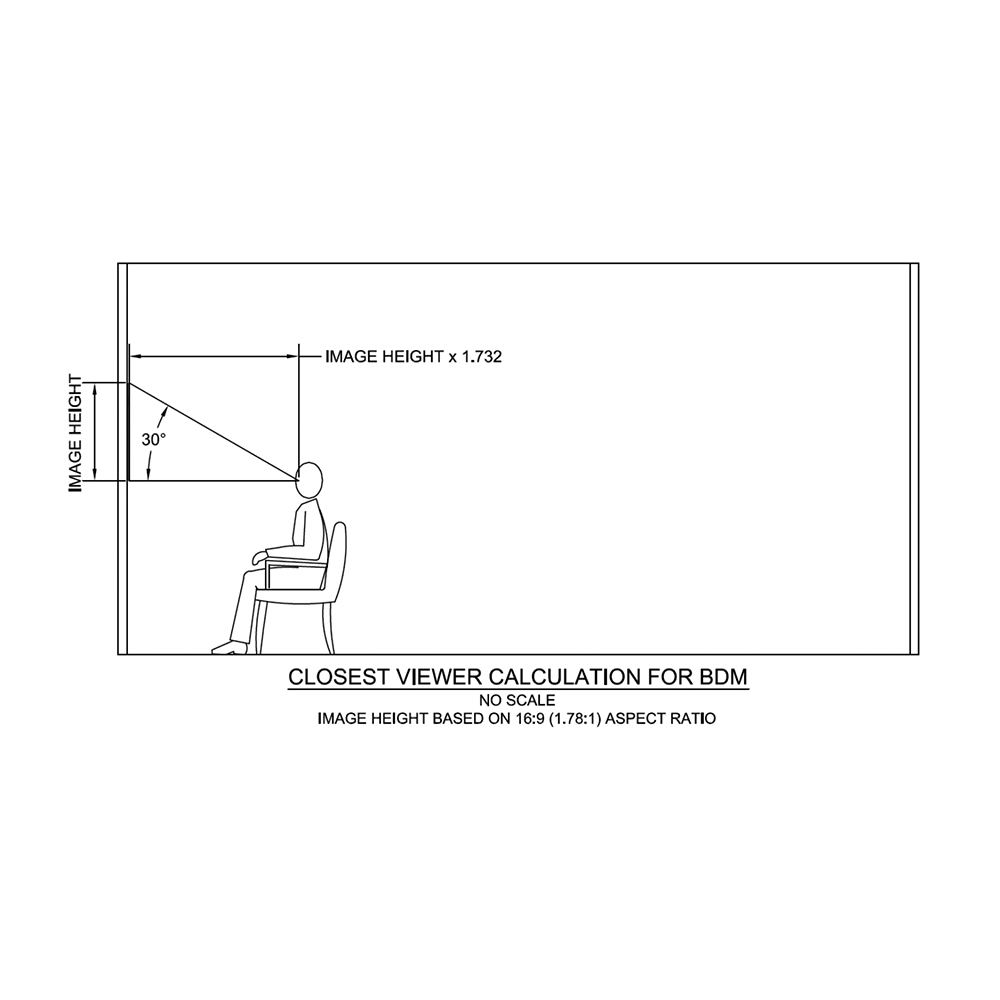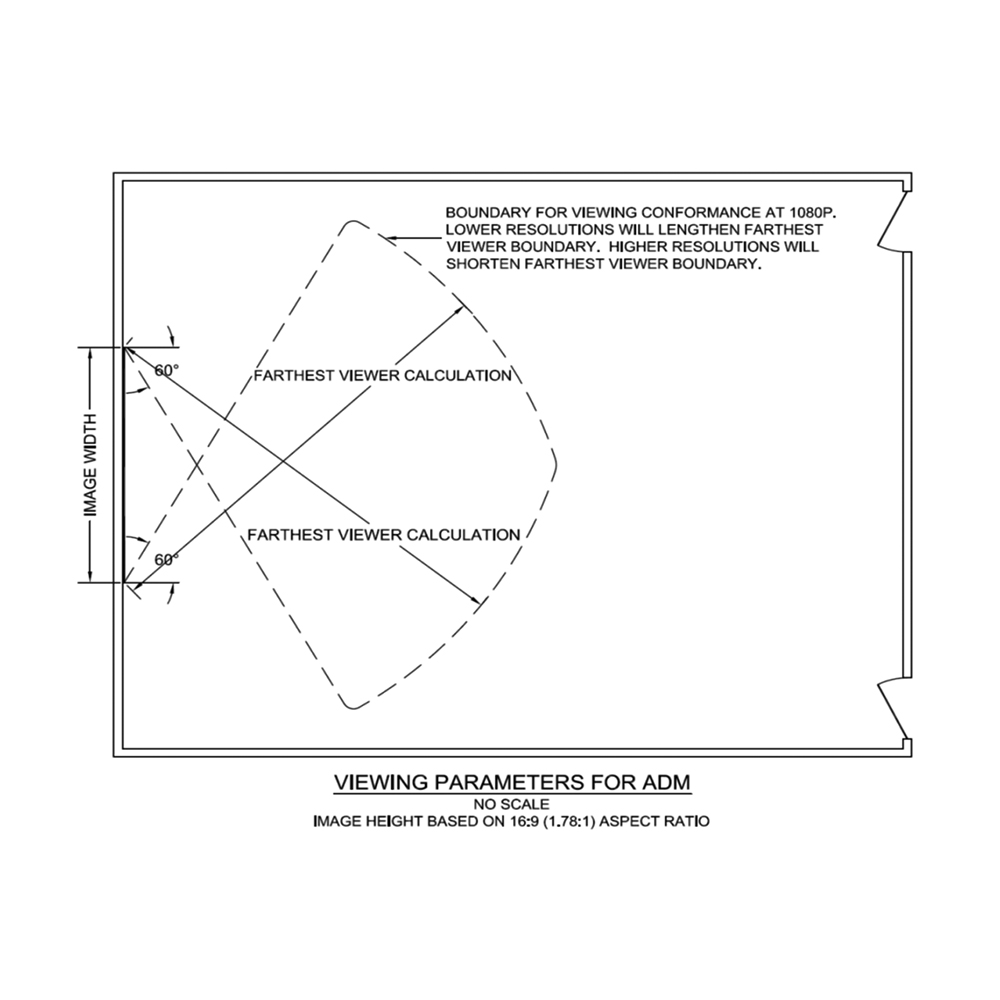Display Image Size
Display Image Size refers to the active image area displaying a user’s content. It’s not about the size of the screen or display, but about what is being shown.
Vocabulary
Definitions from the standard include:
- %Element Height
- The height of an element in relation to the overall Image Height. The BDM %Element Height factor represents the ratio of element height to screen height expressed as a percentage (e.g., 1% represents an element height of 1 unit relative to 100 units screen height). The Standard provides a range of percentages; users of the Standard should vary this percentage according to the content.
- Acuity Factor
- A constant derived from the Visual Acuity standards formulas. The Acuity Factor for Analytical Decision Making and Basic Decision Making are different constants, as the formulas to calculate each are different. The Acuity Factor for Basic Decision Making is 200. The Acuity Factor for Analytical Decision Making is 3438. See Annex 1 for a detailed discussion of these factors.
- Closest Viewer Distance
- The horizontal distance between the display image and viewer.
- Conforming Viewing Area
- The area bounded by the closest and farthest viewer calculations in conformance for viewing the specified content.
- Element
- Term used in relation to Basic Decision Making. It refers to a group of pixels conveying an item of information (e.g., a character at a given font size).
- Farthest Viewer Distance
- Viewer positioned at the farthest distance from the screen as defined by the viewing area.
- Horizontal Viewing Area
- The area bounded by a line drawn 60 degrees from the perpendicular of each edge of the image to determine Closest Viewer.
- Image Offset
- The difference in height between the floor to the bottom of the image against the Viewing Height. The calculation is expressed as a positive number if the bottom of the image is above the Viewing Height and a negative number if the bottom of the image is below the Viewing Height.
- Vertical Viewing Factor
- A value derived from the sum of the Image Height and the Image Offset. The Vertical Viewing Factor shall be undefined if the calculation results in a factor that is less than 50 percent of the Image Height. In this case, the closest viewer cannot be defined by the standard, but the farthest viewer still can be defined.
- Viewing Area Plan
- Plan view drawing of the viewing environment.
- Viewing Height
- The distance from the floor to the eye of the viewer.
Drawing Samples
To conform to the standard, you’ll need to create some drawings. Here are some samples.
 Click on the image to enlarge
Click on the image to enlarge
Ready to Dive in Farther?
Get practical tips on how to implement the DISCAS standard to choose the right display size in your next project with AVIXA’s education. Don’t miss AV Design 1: Environment where you can learn about element, resolution and screen size as a complete system.
Register for AV Design 1: Environment Class
Further Reading
These references appear in the DISCAS standard:
- ANSI/INFOCOMM 3M-2011, Projected Image System Contrast Ratio
- ANSI/HFES 100-2007, Human Factors Engineering of Computer Workstations
- Peter G.J. Barten – Knegsel, Contrast Ratio Sensitivity of the Human Eye and its Effects on Image Quality, (HV Press, 1999)
- Hongyi Cai, Ph.D., and Paul A. Green, Ph.D., Legibility Index for Examining Common Viewing Situations: A New Definition Using Solid Angle
- Peter G. Engeldrum, Psychometric Scaling: A Toolkit for Imaging Systems Development, (Imcotek Press, 2009)
- MIL-STD-1472G, DEPARTMENT OF DEFENSE DESIGN CRITERIA STANDARD: HUMAN ENGINEERING (United States Government, 2012)
- Herman Snellen, Eye Chart (Amsterdam, 1862)
![]() Click on the image to enlarge
Click on the image to enlarge



